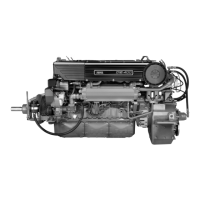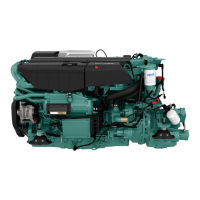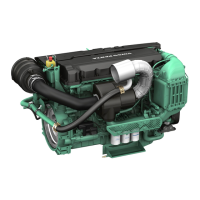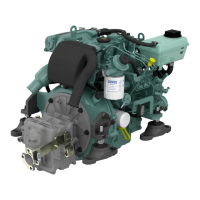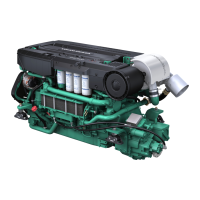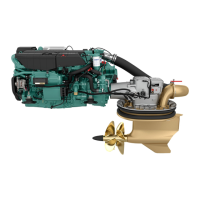At planing speed
Trim the drive to the angle that gives the most stable
and comfortable feeling. If the boat has a twin
installation, the drive can be trimmed to different
angles to compensate for side winds and, to a certain
degree, uneven load distribution.
Driving with ”bow up”
The ”bow up” position is normally used for driving at
cruising speed, choppy seas, or at full speed. With
full ”bow up” the boat can have a tendency to self-steer.
You may have to compensate with the rudder to keep
the boat on the right course. In this position, the bow of
the boat tries to lift out of the water. Excessive ”bow up”
trim causes propeller cavitation, so that the propeller
looses its grip. The engine speed increases without the
boat speed increasing, in fact the boat might even lose
speed.
Be careful when driving in choppy seas.
Excessive ”bow up” trim may cause the boat to bounce
quickly upwards, with the risk of throwing passengers
overboard.
In choppy seas or heavy head seas
Trim the drive down so that the bow drops. This makes
for a more comfortable journey.
Driving in Beach range
The beach range is used for driving at reduced speed
in shallow water or where the depth is unknown.
The highest permitted engine speed when in the Beach
range is 1500 rpm.
IMPORTANT:
Make sure the drive's coolant inlet is never trimmed out
of the water when operating in the beach range.
Instruments and Controls
58 47713726 12-2021 © AB VOLVO PENTA
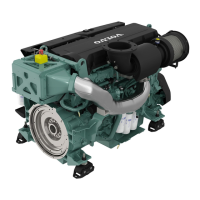
